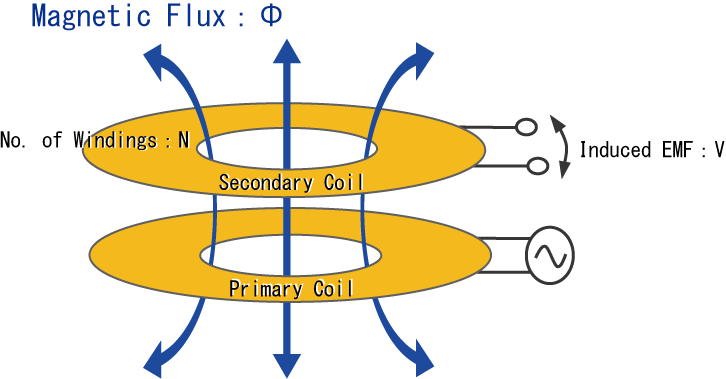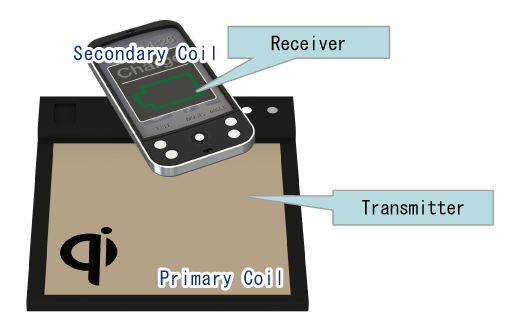What is electromagnetic induction?
As mentioned previously, there are several methods for wireless charging, the most common being electromagnetic induction. This method is characterized by its simple configuration and high efficiency.
Electromagnetic Induction Operating Principle
We will explain the operating principle of the electromagnetic induction method.
This system is based on Faraday's Law on electromagnetic induction.
This law states that induced electromotive force is generated in a direction that cancels the change in magnetic flux, and is expressed as follows.
V =−𝑁(∆Φ/∆𝑡)Faraday's Law on Electromagnetic Induction
∆Φ/∆ is the change in magnetic flux Φ penetrating the coil in an extremely short time ∆

A magnetic flux is generated when an AC voltage is supplied to the primary coil.
On the secondary side, an induced electromotive force is generated that cancels this magnetic flux.
The resulting electricity created on the secondary side can be used to charge devices.
The primary coil for transmission is built into the charger, which is referred to as the transmitter.
The secondary coil integrated into consumer devices is called the receiver.
Shown here is the basic configuration of a wireless charger (electromagnetic induction type). To proceed with commercialization further optimization of the efficiency, transmission distance, charging stability, and other factors is required.





